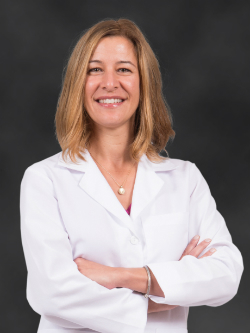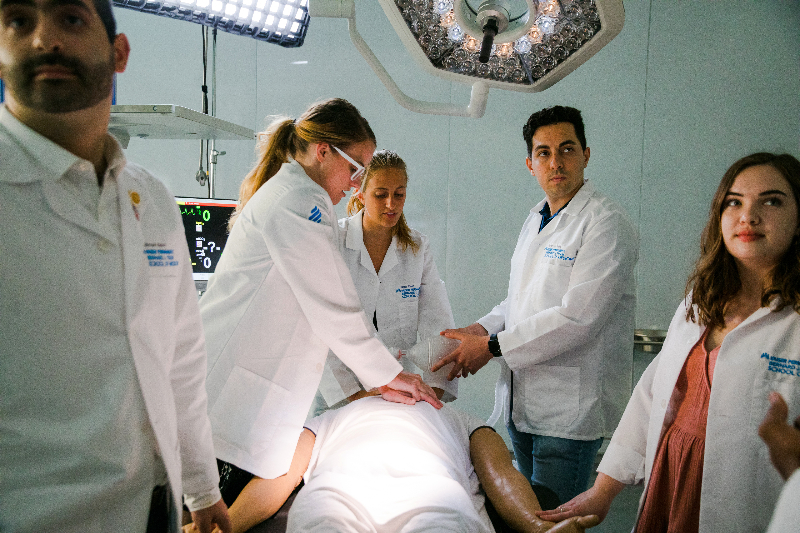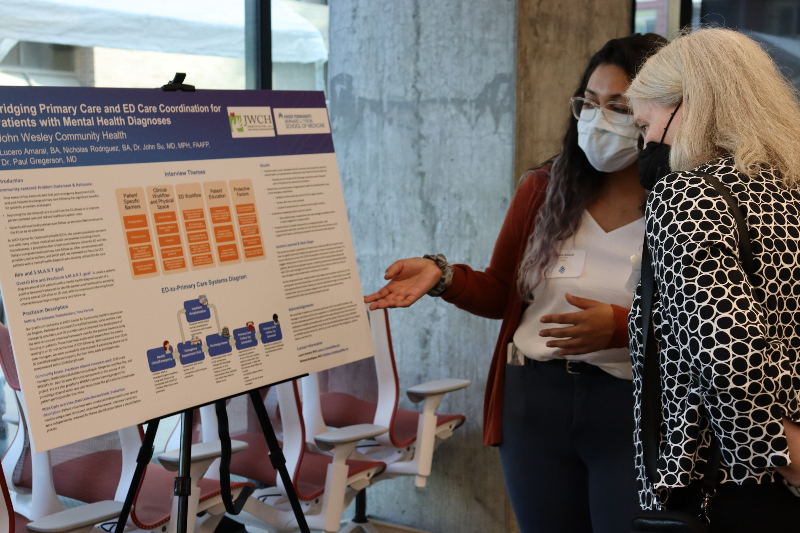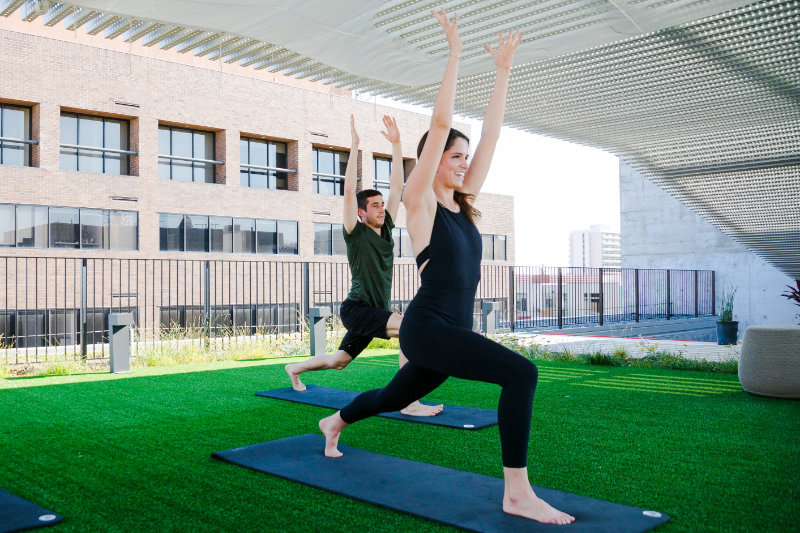Kaiser Permanente Bernard J. Tyson School of Medicine’s Simulation Center provides hands-on experience in a supportive environment.
Inside Perspective: Lindsay Mazotti, MD
Working in a ‘Start-Up’ to Bring a Fresh Approach to Medical Education
This is a series of first-person pieces from the Permanente physicians on the ground floor of creating the new Kaiser Permanente School of Medicine.
Who am I?
I work for The Permanente Medical Group in Northern California at Kaiser Permanente East Bay as a hospitalist and as the assistant physician-in-chief of Education and Development. In my administrative role, I oversee Clinical Medical Education (CME), Graduate Medical Education (GME), Leadership Development and the Communication Consultant team in the East Bay of the San Francisco Bay Area.

I have worked in medical education for a number of years, including as the former clerkship director for the Kaiser Permanente-University of California, San Francisco, Longitudinal Integrated Clerkship (KLIC) based in Oakland, Calif. I’m interested in the continuum of medical education from premedical curriculum through continuing medical education, and in how teaching and education provide engaging professional development opportunities for our physicians.
What am I doing for the School of Medicine?
Since January 2016, I have been serving as a member of the Curriculum Committee and the Executive Curriculum Committee for the Kaiser Permanente School of Medicine. This has been the most incredible “start-up” experience – once in a lifetime!
Our fearless leaders (Christine Cassel, MD, planning dean; Marc Klau, MD, vice dean, Education and Clinical Integration, and Nancy Spiegel, MS, assistance dean, Faculty, Well-being and Clinical Affaris) have assembled a group of about 10 physicians from different Kaiser Permanente regions who sit on the Curriculum Committee, along with a great team of internal Kaiser Permanente experts in technology, research, wellness, diversity, and external consultants for foundational science and accreditation. And I have to call out our amazing project management team, who somehow manage to keep us all organized and moving forward.
We all have been involved in almost every part of the School’s design over the last year, from giving our input to the architectural firm designing our beautiful new building in Pasadena, Calif., to curriculum design, course development, admissions, accreditation, HR and more!
It’s a small group, but we are developing sub-committees overseeing every aspect of the curriculum. We’re working hard to integrate the work, while moving at warp speed to open in a few years. There are many hoops to jump through to make certain we’re on target for our opening date.
I’m currently serving as the co-lead for the Clinical Experiences Committee, and on the Faculty Development Committee, the Phase 1 and 2 Committee (integrated clinical and foundational sciences curriculum), and the Reflection, Education, Assessment, Coaching, Health & Well-being (REACH) Committee, which is designing week-long intervals within the medical school curriculum for reflection, formative assessment, coaching, health, and wellness.
How is it going?
I can’t say enough about the team working on the Curriculum Committee. They are a passionate, dedicated, and (most importantly) fun group and we’ve really bonded in our shared work. There is a lot of laughter and that makes working hard much more enjoyable. Even on conference calls! And there are so many! We get together about once a month in Pasadena for two intense days. But I look forward to the chance to see everyone in person and reconnect.
We have been given the opportunity to imagine how to disrupt Abraham Flexner’s (an American educator, who in 1910 became known for his role in the 20th century reform of medical education in the United States and Canada) outdated model of medical education, which had physicians in mostly foundational science courses for two years, before being placed into the clinical setting. Based on more modern educational research, we’re shifting that model and working to seamlessly integrate the courses so that students are learning how to practice patient-centered medicine in an integrated health system from their first day of medical school.
I’m also very excited that instead of waiting until the third year of medical school, as other schools do, to “try on” specialties in clinical clerkships (for example, spending eight weeks with a team of surgeons in the hospital, followed by eight weeks with an internist in the hospital), our students will care for patients from the start, and follow a growing “panel” of patients over the course of medical school. Students will see their patients primarily in the outpatient setting, where most medical care is actually provided, and work with a core group of clinical teaching faculty. From these apprentice-like experiences, students will come to understand how patients interface with the medical system and how care ranges from preventive and primary care through the course of surgeries, pregnancies, medical emergencies, and even end-of-life care.
I love that our school isn’t cookie cutter – it will serve a diverse student body interested in pursuing diverse careers within the practice and profession of medicine.
Because we get to start from scratch, we’ve been given permission to think outside the box: Who is an ideal medical student? How do they experience medical school? How do we develop their professional identity as physicians, keeping them whole, well and healthy as they enter into the medical field, so that they find meaning in their work and also provide our patients with the highest quality service and care? How do we teach the next generation of physicians to work in inter-professional, integrated teams, to manage big data, and pursue continuous improvement in their workplaces? How do we prepare them for what medicine will look like 50 and 100 years from today? Obviously very simple questions to answer – we have our work cut out for us!
So far our school feels innovative, fresh, and modern. Our students will have cutting-edge technology supporting their education and be able to seamlessly transition between learning and practicing medicine. They’ll also be able to determine their desired field of study (pediatrics? surgery?) early and pursue advanced coursework both within that field and in disciplines or pathways like global health or quality improvement.
I love that our school isn’t cookie cutter – it will serve a diverse student body interested in pursuing diverse careers within the practice and profession of medicine. My hope is that our students will enter into residency programs all over the United States and be “different” in a way that pushes others to reexamine their own teaching strategies and curricula. And we’ll be able to share with other health care systems how Kaiser Permanente is changing the face of American medical education.


